© 2025 MJH Life Sciences™ , Patient Care Online – Primary Care News and Clinical Resources. All rights reserved.
Low Back Pain: Do Guidelines Get it Right?
Do the current LBP guidelines for primary care have it right? If so, are you up-to-date on them? Find out with our 11-question quiz.
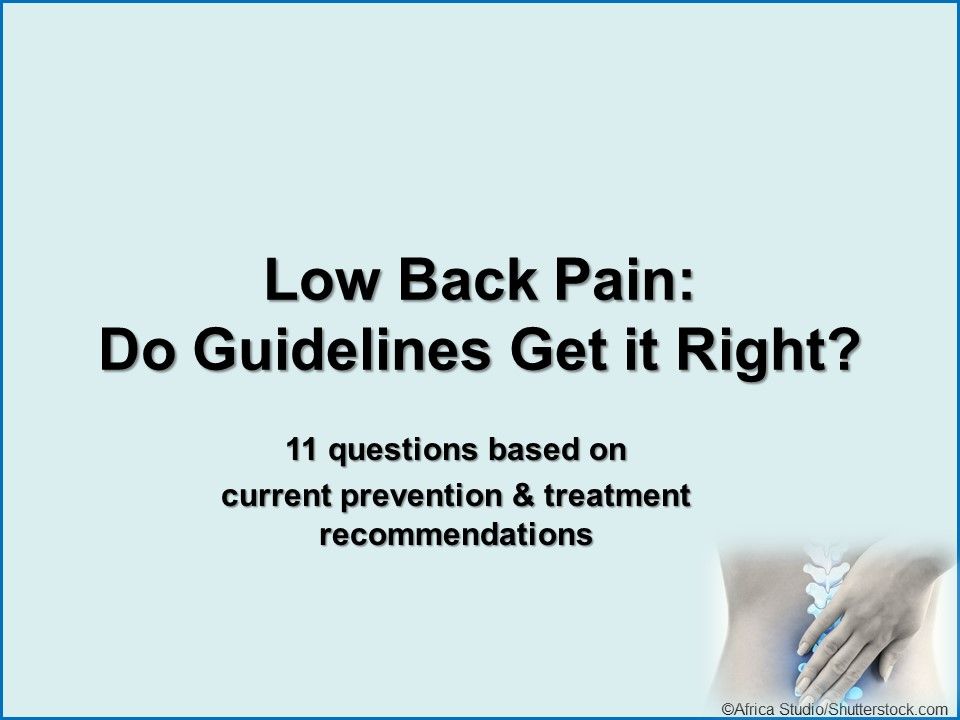
Guidelines for the effective prevention and treatment of both acute and chronic low back (LBP) pain are similar in their recommendations – to guide effective intervention, hew to a biopsychosocial paradigm that includes non-drug treatment supported by education on self-management and resumption of physical activity; include behavioral strategies for those with chronic symptoms.
Do the many guidelines available to primary care on LBP management get it right? If so, does your daily practice align with recommendations? Take this second of 2 quizzes based on a recent feature in the Lancet and see if you’re in lock step with the evidence.

Question 1: True or false? Apart from exercise and education, there is little firm evidence to support any other methods for LBP prevention.
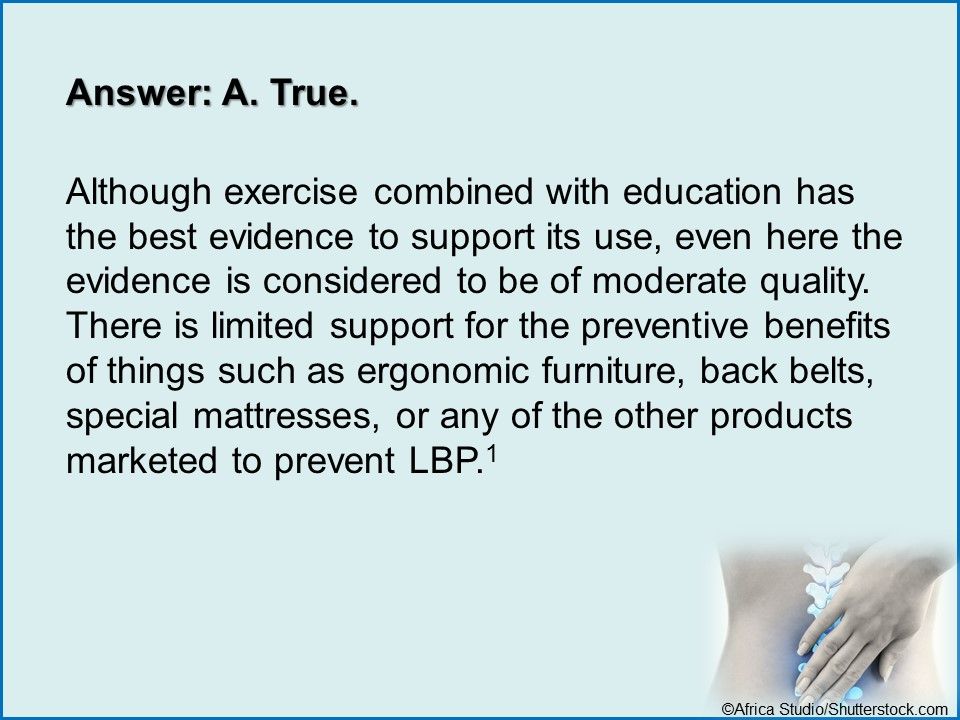
Answer: A. True. Although exercise combined with education has the best evidence supporting its use, the evidence is still considered moderate quality. There is limited support for the preventive benefits of things such as ergonomic furniture, back belts, special mattresses, or any other products marketed to prevent LBP.1
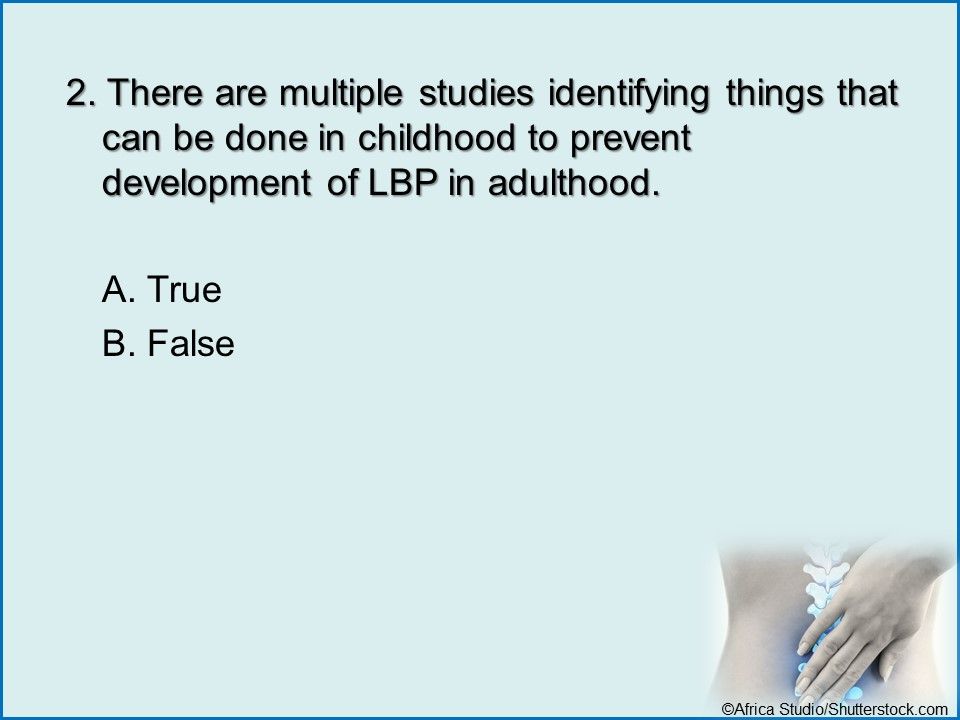
Question 2: True or false? There are multiple studies identifying things that can be done in childhood to prevent development of LBP in adulthood.
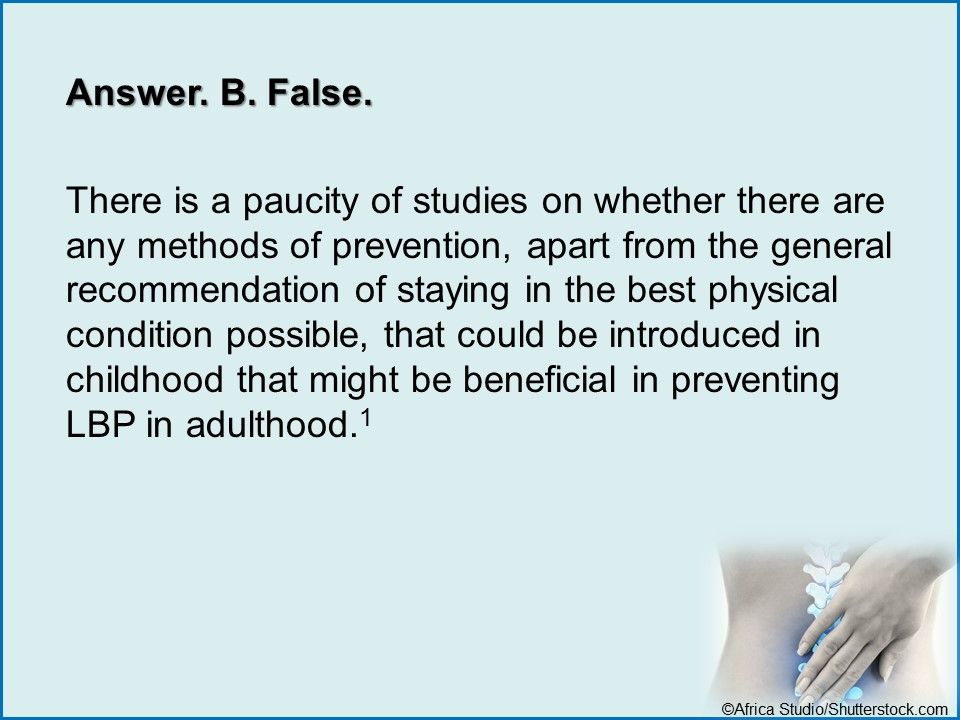
Answer: B. False. There is a paucity of studies on whether there are any methods of prevention, apart from the general recommendation of being in the best physical condition, that could be introduced in childhood that might be beneficial in LBP prevention in adulthood.1
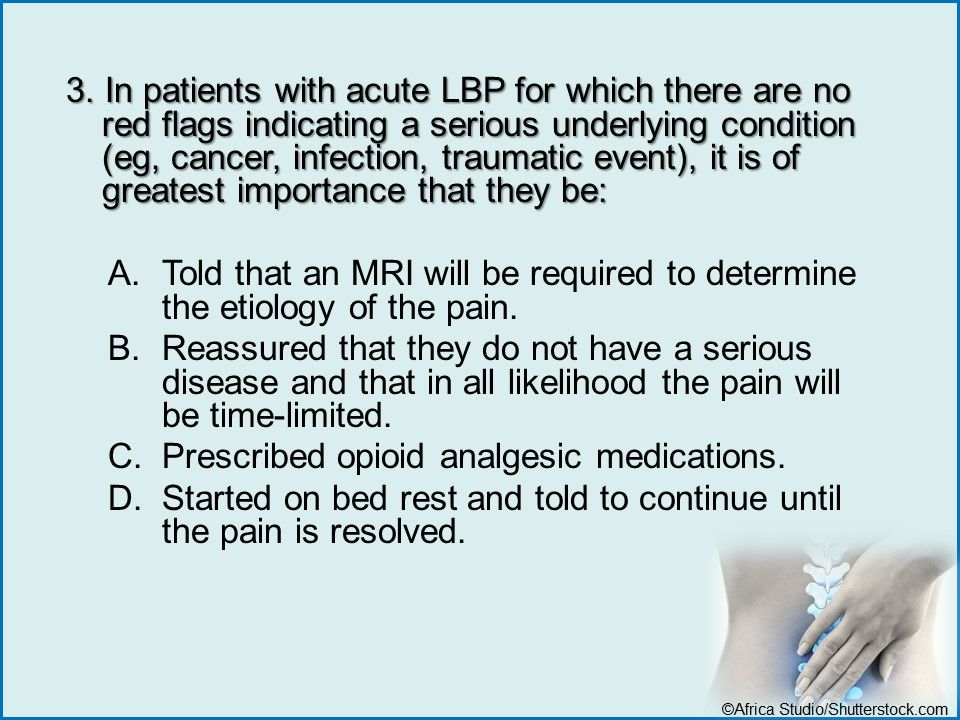
Question 3: Which of the above would be the most important action to take with patients who have acute LBP and no red flags indicating a serious underlying condition?
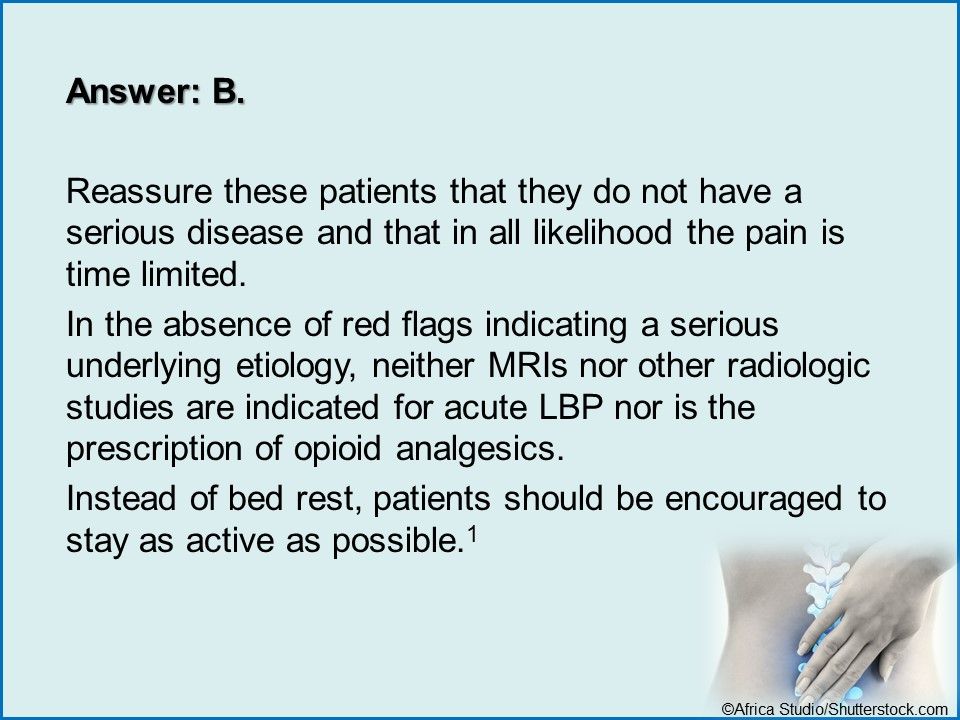
Answer: B. Reassure the patient that they do not have a serious disease and that in all likelihood the pain is time limited.
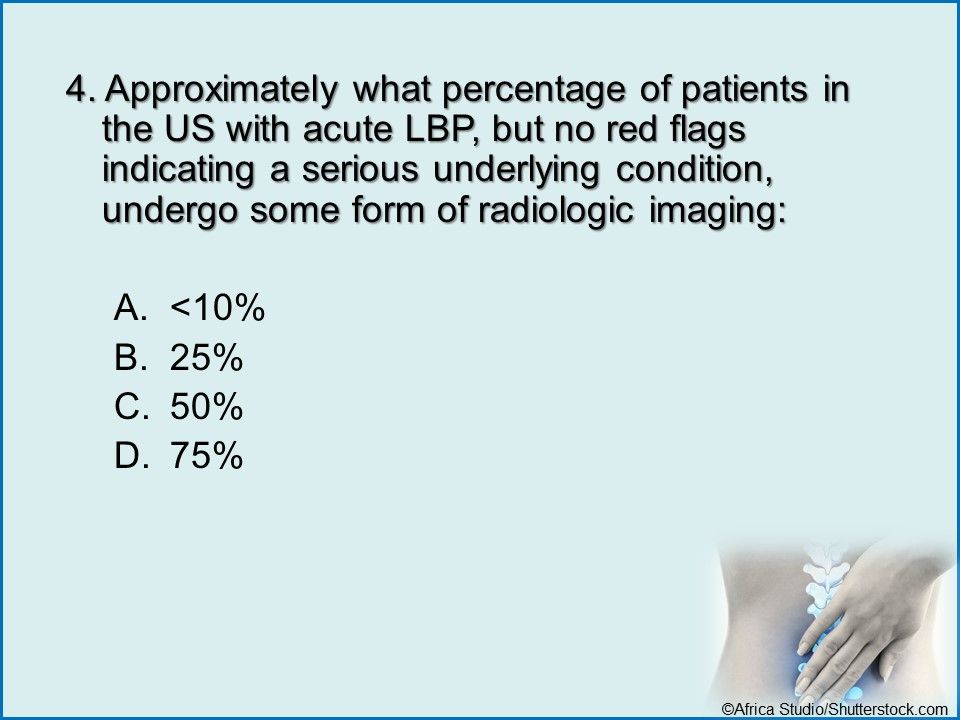
Question 4: Approximately what percentage of patients in the US with acute LBP, but no red flags indicating a serious underlying condition, undergo some form of radiologic imaging?
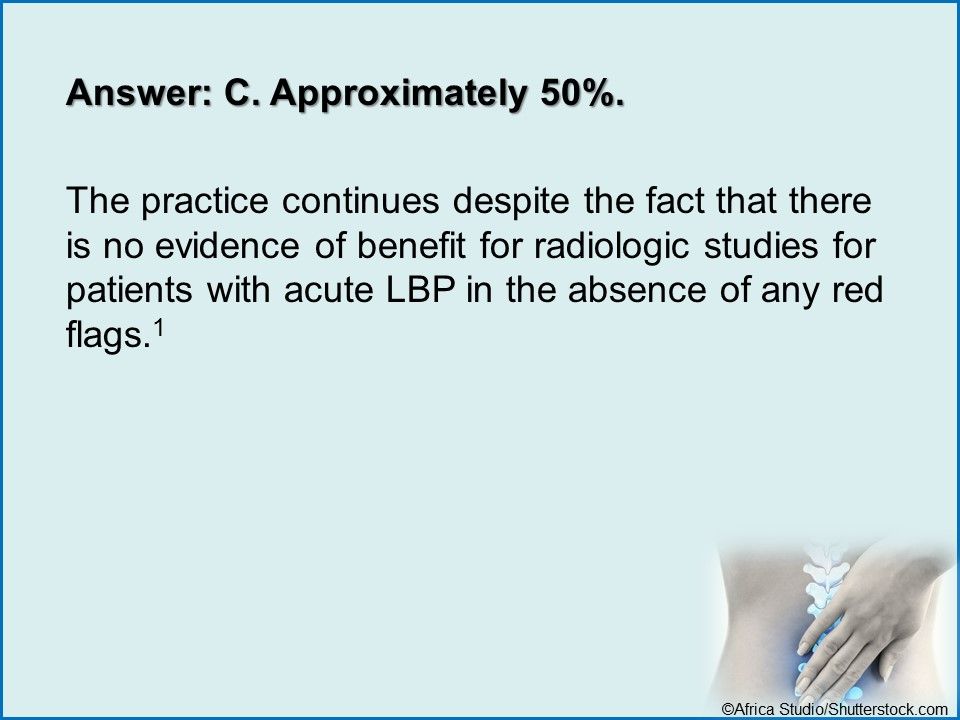
Answer: C. 50%. The practice does continue despite no evidence that radiologic imaging is beneficial for patients with acute LBP and no red flags.
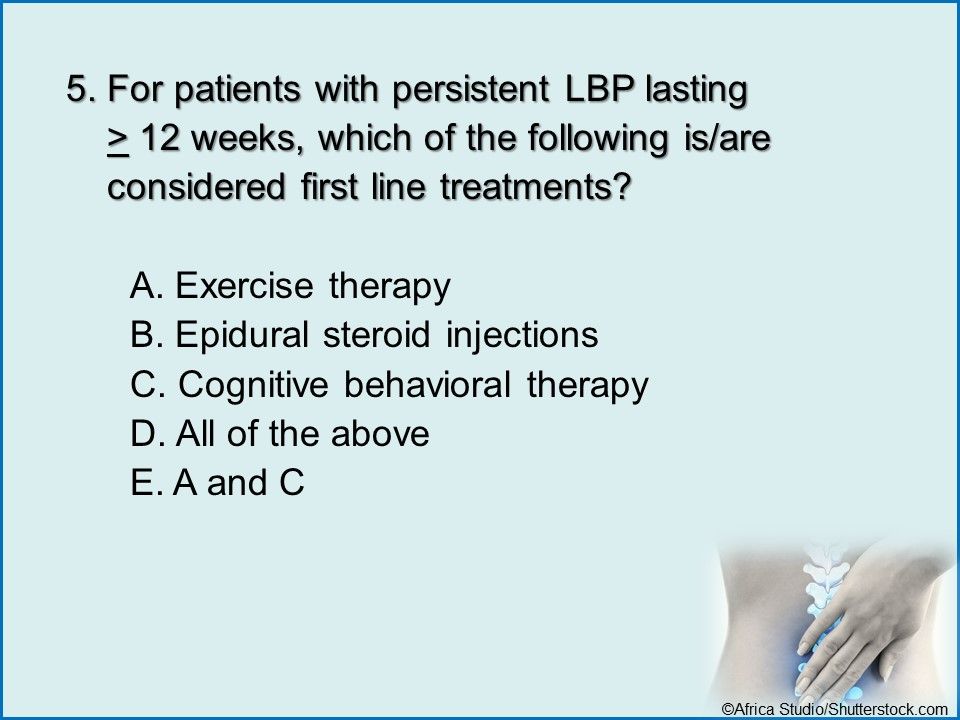
Question 5: Which of the above is/are considered first line treatments for patients with persistent LBP lasting ≥ 12 weeks?
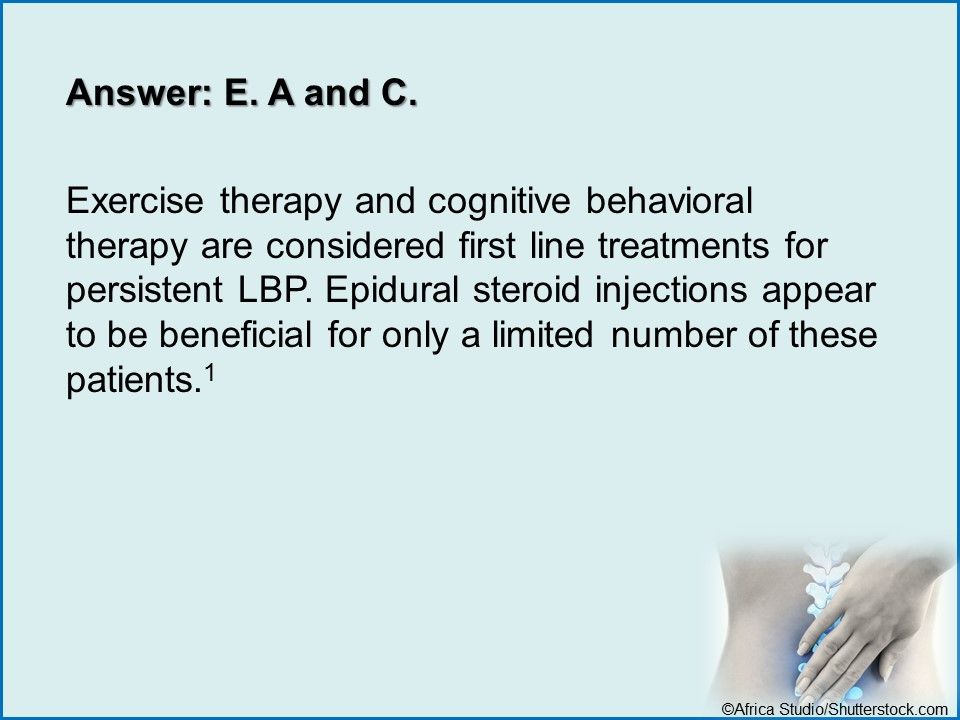
Answer: E. A and C. Exercise therapy and cognitive behavioral therapy are considered first line treatments for persistent LBP. Epidural steroid injections appear to be beneficial for only a limited number of these patients.1
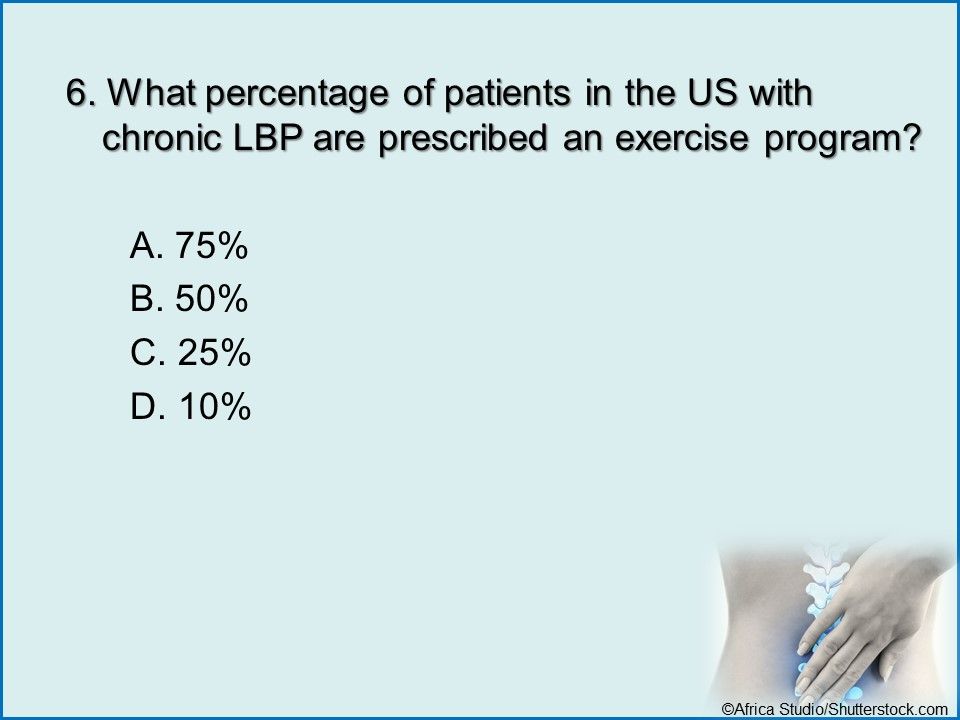
Question 6: What percentage of patients in the US with chronic LBP are prescribed an exercise program?

Answer: B. 50%. Despite the evidence that supports exercise as a first line treatment for chronic LBP, it is prescribed for only about half of these patients.1
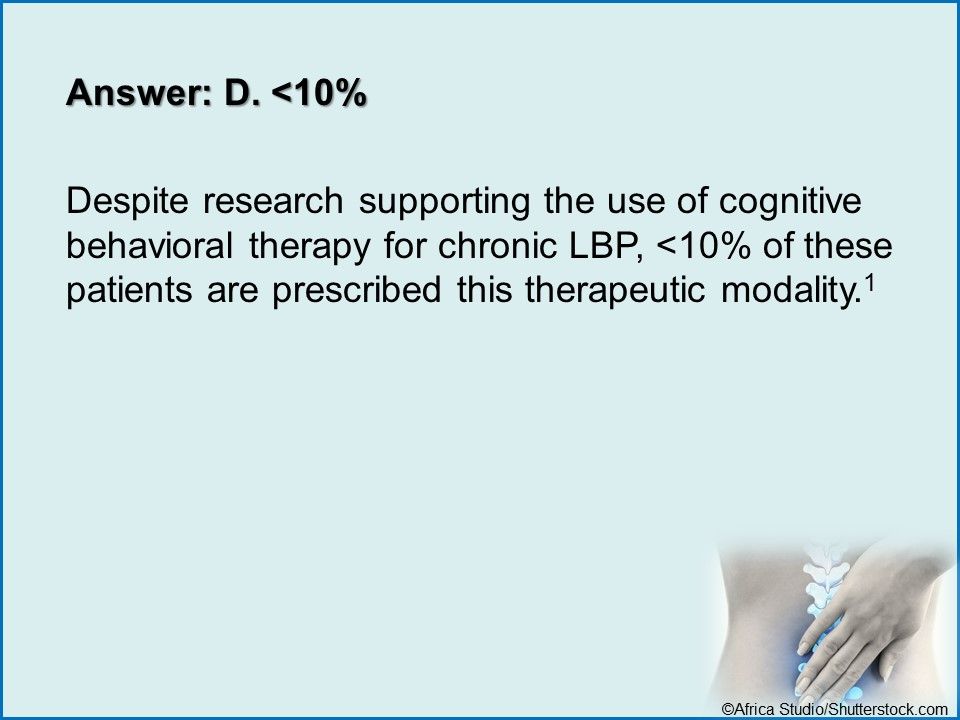
Answer: D. <10%. Despite research supporting the use of cognitive behavioral therapy for chronic LBP, fewer than 10% of patients are prescribed this therapeutic modality.1
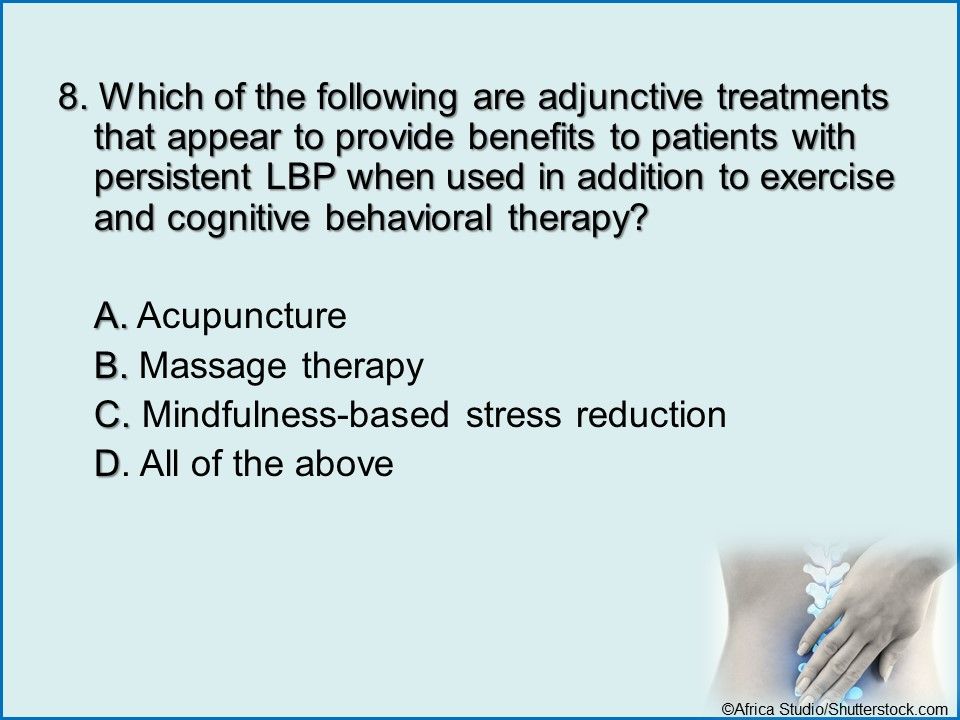
Question 8: Which of the above are adjunctive treatments that appear to provide benefits to patients with persistent LBP when used in addition to exercise and cognitive behavioral therapy?

Answer: D. All of the above. All of the therapies may provide benefit to patients with persistent LBP.1
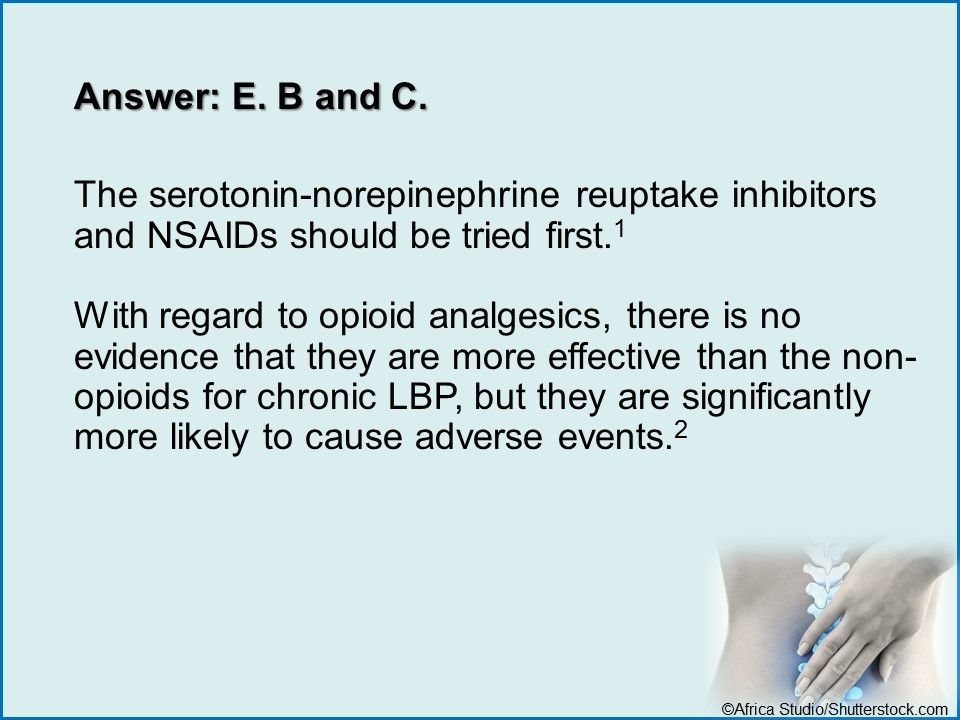
Answer: E. B and C. The serotonin-norepinephrine reuptake inhibitors and NSAIDs should be tried first.1

Question 11: For patients who undergo lumbar spine surgery for LBP, which of the above factors are most likely to predict poorer outcome?
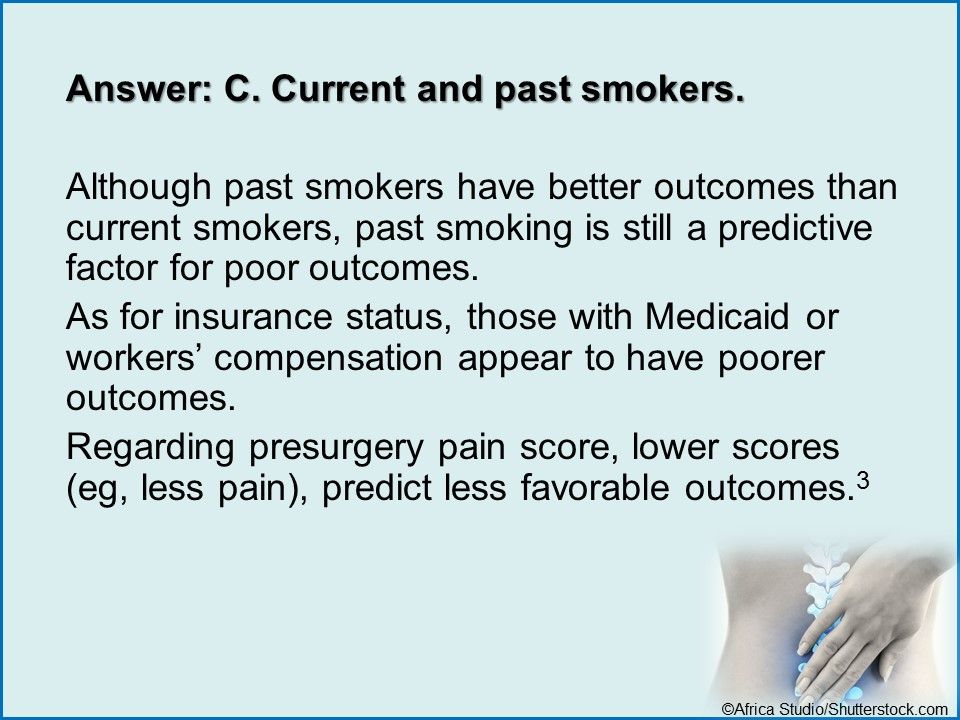
Answer: C. Current and past smokers. Even though past smokers have better outcomes than current smokers, past smoking is still a predictive factor for poor outcomes.
For more information:
1. Foster NE, Anema JR, Cherkin D, et al. Low back pain 2: Prevention and treatment of low back pain: evidence, challenges, and promising directions. Lancet. 2018.
2. Krebs EE, Gravely A, Nugent S, et al. Effect of opioid vs nonopioid medications on pain-related function in patients with chronic back pain or hip or knee osteoarthritis pain. The SPACE randomized clinical trial. JAMA. 2018;319:872-882.
3. Khor S, Lavallee D, Cizik AM, et al. Development and validation of a prediction model for pain and functional outcomes after spine surgery. JAMA Surg. 2018.
Related Content:







